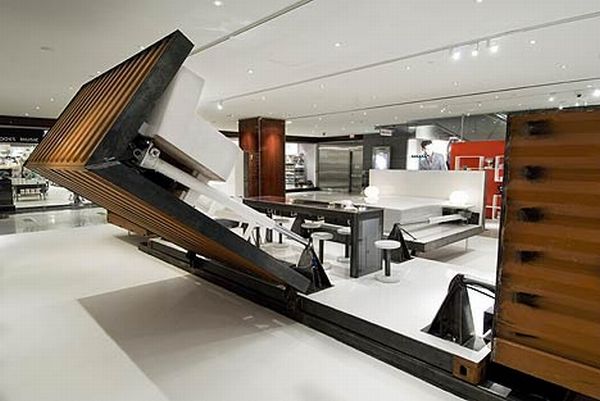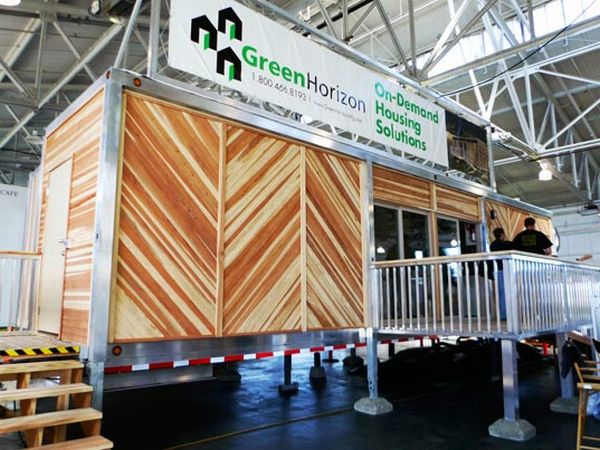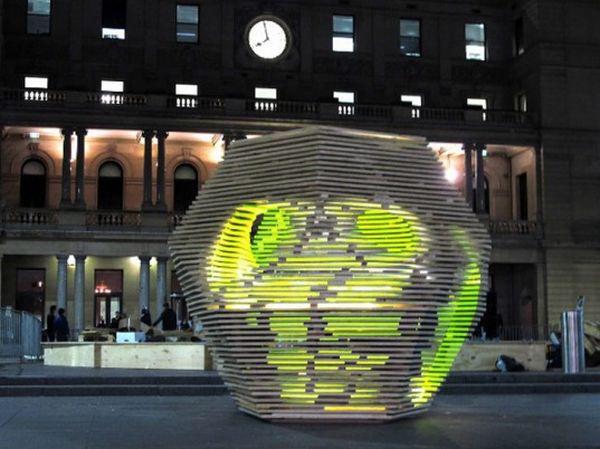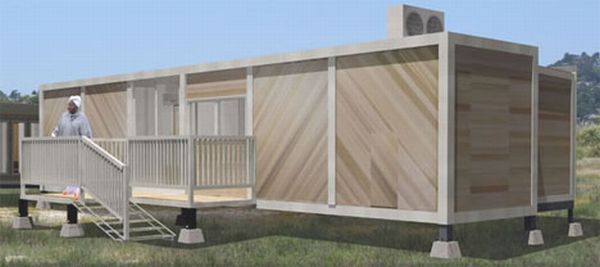
Living on earth is not as easy as it seems. We are very often confronted with natural disasters that come in various forms like earthquakes, hurricanes, tsunamis etc. Though these sudden disasters last for a short while, the aftermath is prolonged and catastrophic one, as millions of people get displaced and are rendered homeless. In such situations, there is a need to provide sustainable disaster relief homes that are cost efficient and possibly environmental friendly. Many architects and designers are now stressing on green construction techniques for creating sustainable and eco-friendly homes. Listed below are five such homes which can provide shelter to the homeless during the time of any natural catastrophe while being eco-friendly in construction and sustenance.
1. Recycled Pallet House

The team of designers Azin Valy and Suzan Wines, of I-Beam Design, have come up with the innovative concept of Pallet House. The designers have abide-d by green building techniques and have reused shipping pallets to construct a living space that can provide shelter to people affected by natural disasters. This idea of making use of shipping pallets is not new and was developed by I-Beam for a Transitional Housing contest in Kosovo. These houses do not take much time to get assembled and once built as a temporary home, can also serve as a frame for making a permanent residence. The building material for a pallet house is waste shipping pallets which would have filled up the landfills otherwise. Re-using this waste timber and making a shelter for homeless people is indeed an eco-friendly way to help the needy.
2. Push Button House by Adam Kalkin

Architect/artist Adam Kalkin has created this fully functional living space that opens up elegantly like a flower. He has cleverly made use of a dormant shipping container transforming it into a house with just a push of a button. âThe Push Button Houseâ, as Kalkin calls his concept, makes good use of hydraulic power to lift and lower the sides of the shipping container that becomes larger in size and accommodates a bathroom, kitchen, bedrooms and living area. Though this concept of making use of an industrial product and re-purposing it into a home is not feasible, but it can serve as a temporary living space for those who are left homeless during natural disasters.
3. Prefab home

Green Horizon is a San Francisco-Based architectural firm that aims to build prefab houses out of 100 percent recycled or recyclable materials and the entire construction is structured around a metal frame that lets the house to be arranged in various configurations according to the userâs requirements. The self sustainable prefab house by Green Horizon was debuted at The West Coast Green, which is the world’s leading interactive conference on green innovation for the built environment. The CEO of Green Horizon came up with the idea of building structurally insulated panels out of oriented strand board (OSB). These could be immediately assembled around a metal frame and made into a home that can provide shelter to a family at the time of disaster. Many such prefabs could be linked together to make use of water and power jointly. These prefab homes can generate their own green power by making use of PV panels and bio-fuel generators. This innovative creation is perfect home for the families that are left homeless after any natural calamity.
4. LAVAsâ Disaster Relief Prefab Pod

Australian designer firm LAVA (Laboratory for Visionary Architecture) is a world famous architecture company that employs renowned architects from around the globe. This time their Prefab house that was specially designed with a purpose of serving the victims of any natural catastrophe, was displayed at the Emergency Shelter Exhibition in Sydney. This resourceful prefab house looks exactly like an Origami pod and the natural and recycled materials used for the construction make it an eco-friendly emergency shelter. The Prefab Pod provides a comfortable and cosy shelter during calamities and destruction. The interiors of the pod are built of recycled timber, newspapers, and card-boards. The house can accommodate a living space for two adults and a child. The pod is lightened by LEDs that are powered by solar panels. LAVAâs emergency shelter illuminates like a lantern. Moreover, this pod can also be folded and easily carried to any place rendering the necessary aids to the needy during any disaster.
5. Disaster Relief House from Green Horizon

The Disaster Relief House created by architectural firm Green Horizon was exhibited at the West Coast Green event. This house was made from a shipping container that was lying abandoned. This can be transported easily to the place of the catastrophe. The shipping container opens up into a 8X12 feet wide functional area that includes a kitchen space with microwave and oven, a fold-out bed with bedding and all comfortable requirements for a family of four and all these units are created by making use of 100 percent recycled or recyclable materials. The house is solar powered and a water system is designed below the unit so as to purify the water that is being used by the family as well as the water that is drained out, leaving a zero ecological impact on the land where the house is placed.


